Nick Griffin: "The world’s biggest companies are accelerating - and they’re cheaper than last year"
After a blockbuster night of US tech earnings, the narrative that “these stocks can’t keep growing” looks shakier than ever. Alphabet, Meta, and Microsoft each posted results showing that not only are revenues still expanding, they’re accelerating - an almost unnerving feat at their size.
For Munro Partners’ founder and CIO, Nick Griffin, that’s the signal investors should focus on. While much of the market continues to fret about lofty valuations, Griffin argues the data - and the math - tell a different story.
“The really fascinating thing about these companies is they're all actually cheaper this year than they were last year. On a forward multiple basis, every single one of these is cheaper than it was a year ago.”
In his view, investors are still underestimating the durability of the secular trends powering Big Tech’s next act: cloud adoption, advertising efficiency, and the AI-driven reshaping of entire business models.
“The revenue of these companies is actually accelerating and that’s a scary sign for the rest of the world,” Griffin says.
In this conversation, Griffin explains why the rally in US tech remains grounded in fundamentals rather than hype, why he believes the earnings power of these businesses still isn’t fully priced in, and why moments of market doubt tend to be opportunities rather than warnings.
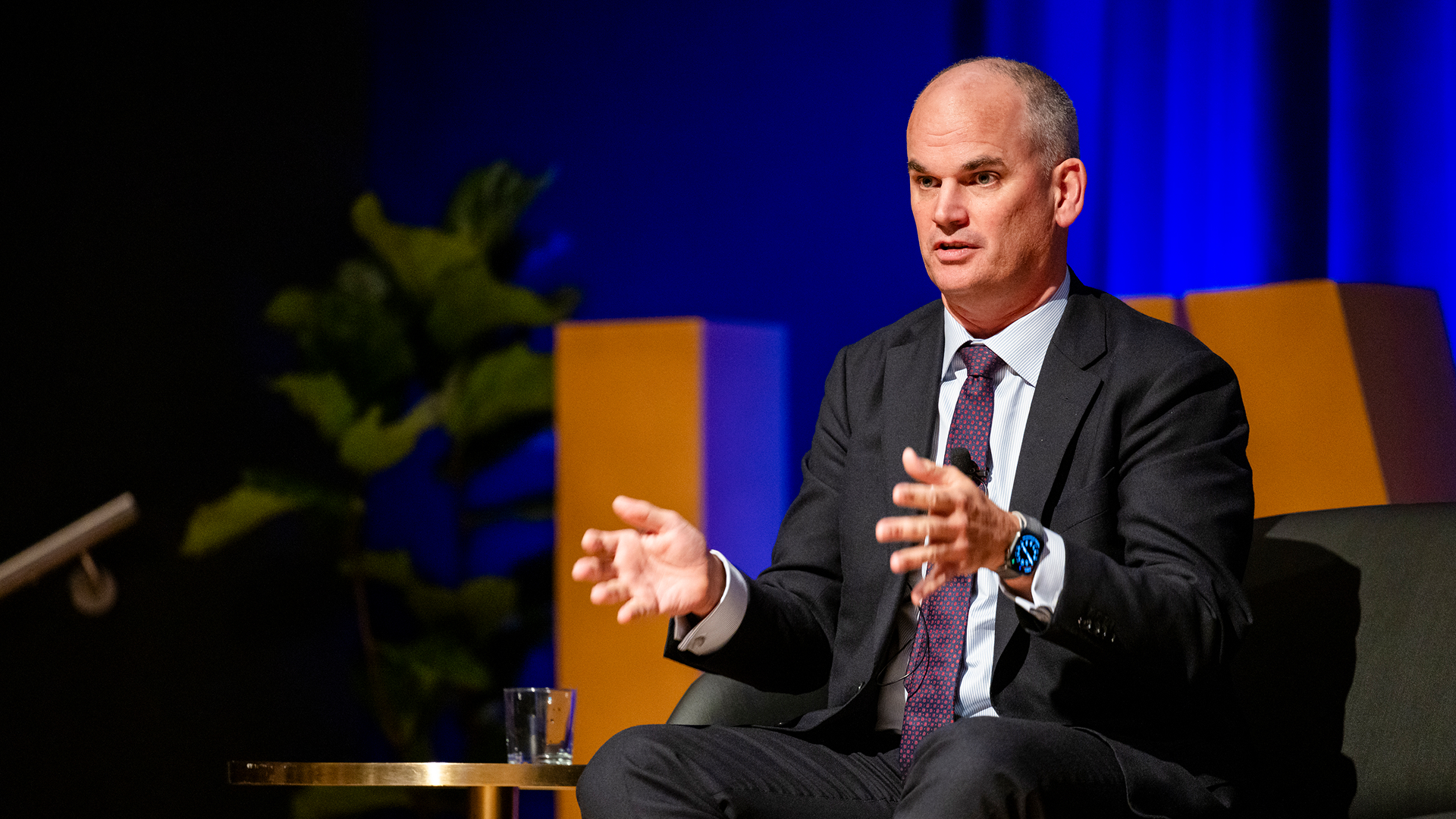
The state of play: AI is still feeding the beast
Griffin begins with a startling data point: the world’s biggest tech companies, already generating hundreds of billions in annual revenue, are now accelerating their top-line growth.
“Microsoft, which is a US$4 trillion company, is growing its revenue at 18% year on year, and that’s accelerating from 16% the year before.
Meta’s growing at 25% this quarter, up from 22% last quarter and 16% the one before.
Even Google’s growing 15%, which is another US$50 billion of advertising dollars that’s come off somebody else.”
In other words, the pie isn’t getting larger; rather, these giants are taking share. The common catalyst, he argues, is artificial intelligence, specifically the rapid improvement in recommendation and targeting engines that make ads more effective.
“All of this acceleration is not coming from the economy because the economy’s not better,” Griffin says. “It’s coming from the use of these AI models for better algorithms, better recommendations, better targeting of ads. And because they’re getting such good results from that, they’re investing even more - feeding the beast.”
Asked whether this acceleration could taper once algorithms reach saturation, Griffin shakes his head. The universe of potential advertisers is still widening, he explains, as businesses that once spent on physical stores or promotions now allocate those dollars to online targeting.
“They’re bringing the yoga store in Brighton into the advertising market that otherwise wasn’t there,” he says.
Microsoft (NYSE: MSFT): still the one-stop shop for the cloud decade
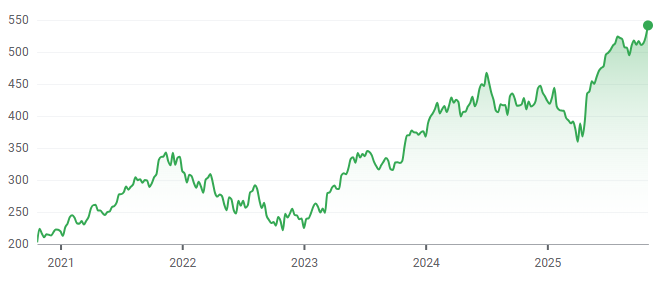
For Munro Partners, Microsoft remains a cornerstone holding, and for good reason. Griffin describes the company as the infrastructure backbone of the digital economy.
“To get all this stuff to work, you need to run your business on the cloud,” he says.
“Shopify doesn’t have its own servers; it uses someone else’s. Microsoft is the second-largest cloud provider on the planet behind Amazon, and that business is growing around 40% per annum.”
He argues that global cloud adoption is still early — “not even 30% of the way through it.” Most Australian businesses, he notes, still have less than half their workloads on the cloud. As that migration continues, Microsoft’s total revenue base should continue to compound.
“Even if their margins don’t expand, 15% revenue growth means 15% earnings growth, and that means earnings will double in five years,” he says.
“If the multiple stays the same, the share price doubles. I’m surprised people haven’t pulled that forward, but they just haven’t.”
Griffin notes that Microsoft’s valuation has barely changed in half a decade, trading on roughly the same multiple it traded on three and five years ago, despite consistently delivering.
“Microsoft trades at the same multiple today as it did last year, which is the same multiple it traded on three years ago, which is the same as five years ago,” he says.
Alphabet (NYSE: GOOGL): AI lifts the floor, not just the ceiling
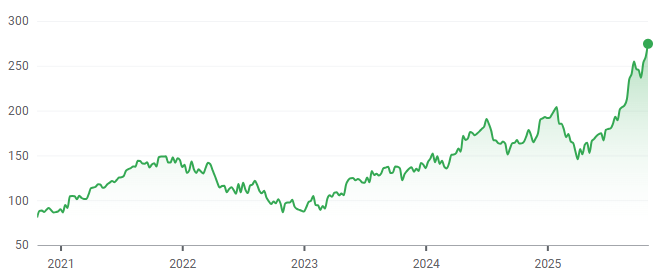
Despite widespread fears that AI search tools would eat into Google’s dominance, Griffin says the opposite is happening.
“Search didn’t fall, it accelerated,” he explains.
Alphabet’s advertising revenue growth has rebounded to around 14%, reversing a brief slowdown last year. “People expected their search numbers to fall,” Griffin says, “but it didn’t happen, and it was reasonably obvious that wasn’t going to happen.”
He credits this to AI-enhanced intent-based search. “When you do an AI search, you’re not just typing a few words. You’re saying, ‘I’m looking for a hotel in California for these dates by the beach.’ That intent converts better, so even if the share of search declines, the price per search goes up.”
Google’s ecosystem - spanning search, YouTube, Chrome, Android, and Gemini - gives it an embedded advantage.
“Apple’s problem is Siri doesn’t work that well,” he notes. “Google doesn’t have that problem. They can put Gemini into Android. They’ve got the top of the funnel.”
The takeaway, Griffin says, is that Alphabet is “not expensive.”
“These companies are cheaper today than they were a year ago,” he stresses. “Provided you don’t think search disappears off the face of the earth - and I don’t - these other options will work quite well.”
Meta (NYSE: META): the compounding machine
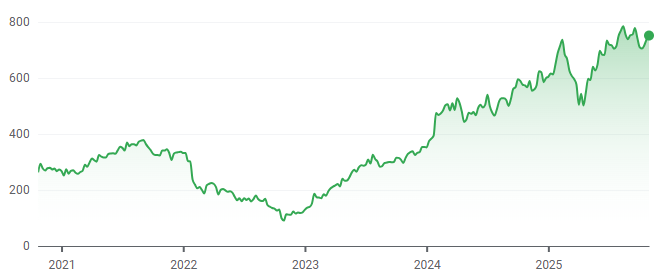
Meta’s numbers, Griffin argues, demonstrate how AI can enhance not just user engagement but advertising efficiency.
“Meta is growing its revenue at 25% this quarter,” he says.
“That’s roughly US$50 billion a quarter — US$200 billion a year — and it’s still accelerating.”
That acceleration, he explains, reflects Meta’s unparalleled ability to use AI for ad targeting, recommendation, and measurement. “That’s 50 billion of advertising dollars that have come off somebody else, because advertising globally isn’t growing at 26%.”
Crucially, he adds, Meta’s reinvestment in AI is a feature, not a flaw.
“They need to continue to feed the beast by spending more on compute. But the results justify it.”
While investors may fret about rising capex, Griffin argues Meta’s dominance gives it room to invest heavily without damaging profitability. For long-term investors, he believes that’s the opportunity.
Amazon (NYSE: AMZN): the next test, and the next opportunity
Please note that Amazon reported after this interview with Griffin, posting third-quarter earnings that exceeded expectations and strong cloud growth.
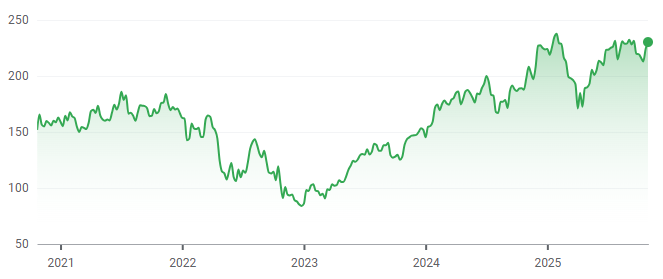
Amazon’s results are yet to be released (it reports tomorrow morning), but Griffin framed it as the next key test of the “AI tide lifting all boats.”
“Hopefully their revenues accelerate, otherwise they’re losing share,” he says.
“That would mean their cloud business has to accelerate, otherwise they’re losing share to Microsoft and Google.”
He also highlights the coming challenge for Amazon’s retail model: whether ChatGPT-style shopping assistants will reroute consumer searches away from the Amazon store. “The top of the funnel used to be the Amazon store,” Griffin says. “Now you might ask ChatGPT to find what you’re looking for - that’s the next test.”
Still, he believes those fears are likely overstated.
“Amazon will find its way through it the same way Google has,” he says. “It’s the one no one likes right now, and that’ll create a big opportunity.”
The bigger picture: opportunity, not overinvestment
The recent chatter about “circular investing” - Oracle funding OpenAI, OpenAI buying chips from Nvidia, and so on - doesn’t worry Griffin.
“It’s true that one of the players, OpenAI, needs to be funded in creative ways,” he says. “But it doesn’t mean AI isn’t going to work or that it’s going to blow up.”
He expects overinvestment eventually - “maybe by the end of the decade” - but not now. “We’re going to need a lot of compute for at least the next five years,” he says.
“At some point, we’ll work out if we built too much, but that’s not something we are worrying about today.”
For Griffin, the message is clear: AI-driven growth is broad-based, massive capex is paying off, and earnings are accelerating. As a result, the giants leading the charge are not overpriced; they’re underappreciated.

5 topics
4 stocks mentioned
1 fund mentioned
1 contributor mentioned

